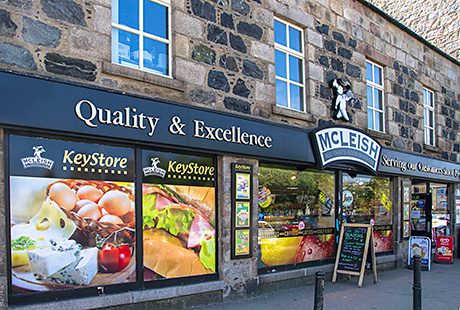
MORE than one in seven of Scotland’s shops are empty, in a third of the country’s top towns seven out of 10 of empty retail premises have been vacant for a year or more, and Aberdeenshire includes towns that are the worst and the least hit by shop closures.
A major report by Stirling University’s Institute of Retail Studies and the Local Data Company on Scotland’s top 100 cities and towns also showed that just one in 20 of the towns had a shops vacancy rate of 5% or less while in one in five of the areas the rate was 20% or higher.
Aberdeenshire emerged as an area of shop utilisation extremes. Banff and Huntly were the worst hit by vacancies, in both towns more than 30% of shops are not being used. In stark contrast Inverurie has the lowest vacancy rate at 2%.
Among Scotland’s cities Inverness has the highest vacancy rate at 18%.
The study also detailed what the project’s partners call the BMGC (Booze, Money, Gambling & Charity) index. The figure shows what proportion of a town’s retail space it taken up by the combination of off-sales outlets, payday loan shops, cheque clearance outlets and pawnbrokers, bookmakers and charity shops.
On average, BMCG units accounted for 6.7% of retail outlets in the towns covered in the Insitute of Retail Studies / Local Data Company report.
Musselburgh, Callander, Dalkeith, Greenock and Airdrie all had BMGC scores of 10 or more. Aberdeen had the highest BMGC index value of the cities at 4.73.
Gourock was shown to have the highest proportion of independent shops. Independent businesses accounted for 85% of the total outlets in the town. Gretna and Livingston had the lowest proportion of independent shops at 6% and 13% respectively.
Ayr and Paisley were found to have the greatest retail diversity.
Glasgow was described as Scotland’s premier shopping city, with more than 5,000 shops.
Professor Leigh Sparks, from the Institute of Retail Studies, said: “We are living in interesting times for Scotland’s towns and cities. Structural change in retailing is transforming what we think about shops and shopping and how we carry out these activities.
“This report shows that despite concerns, retailing is still a fundamentally important and numerically and economically significant component of Scotland’s cities and towns. But there is considerable variation in the significance of, and make-up of, the retail mix across Scotland’s towns and cities.”















